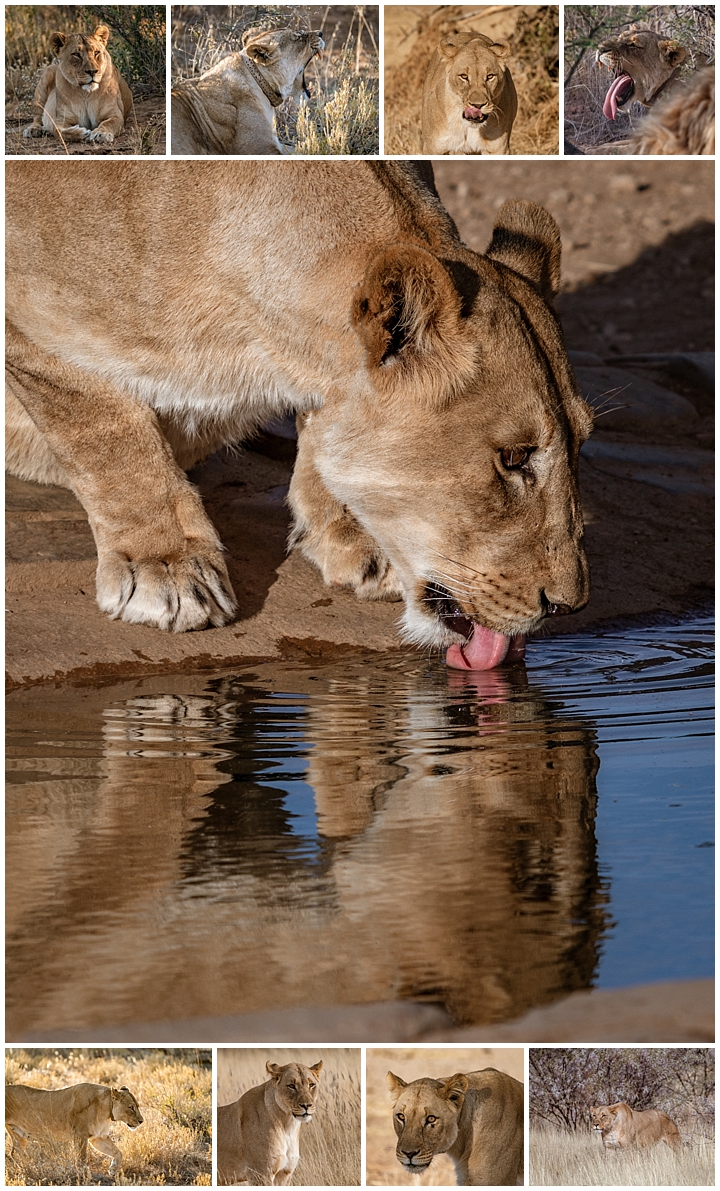
We finished our Namibia tour by staying at the luxurious Old Trader’s Lodge in the Erindi Private Game Reserve for two nights. This is a huge reserve covering 273 square miles or 71,000 hectares. We had three game drives here. With the abundance of wildlife to be seen, including animals that visited regularly to the watering hole at the lodge restaurant, this post is being broken into two parts.
Lions are a major component of “The Big 5” game animals of Africa. As such, they are always considered prime game to track for any photographic safari. On private game reserves, jeeps can drive off road, often times over very heavy brush to track the animals, whereas it was required to stay on the established roads in public parks. Erindi has two large prides of lions, both of which were found in our three drives. The females (above) are the most active during the day, often hunting for food. We witnessed one “kill” where a wild cat was caught by the lions, then strewn aside like a rat. The young lions were clearly practicing their hunting technique. One of the 10+ females on the reserve has a radio collar (top row, 2nd image) to assist researchers studying the range of the lion family.
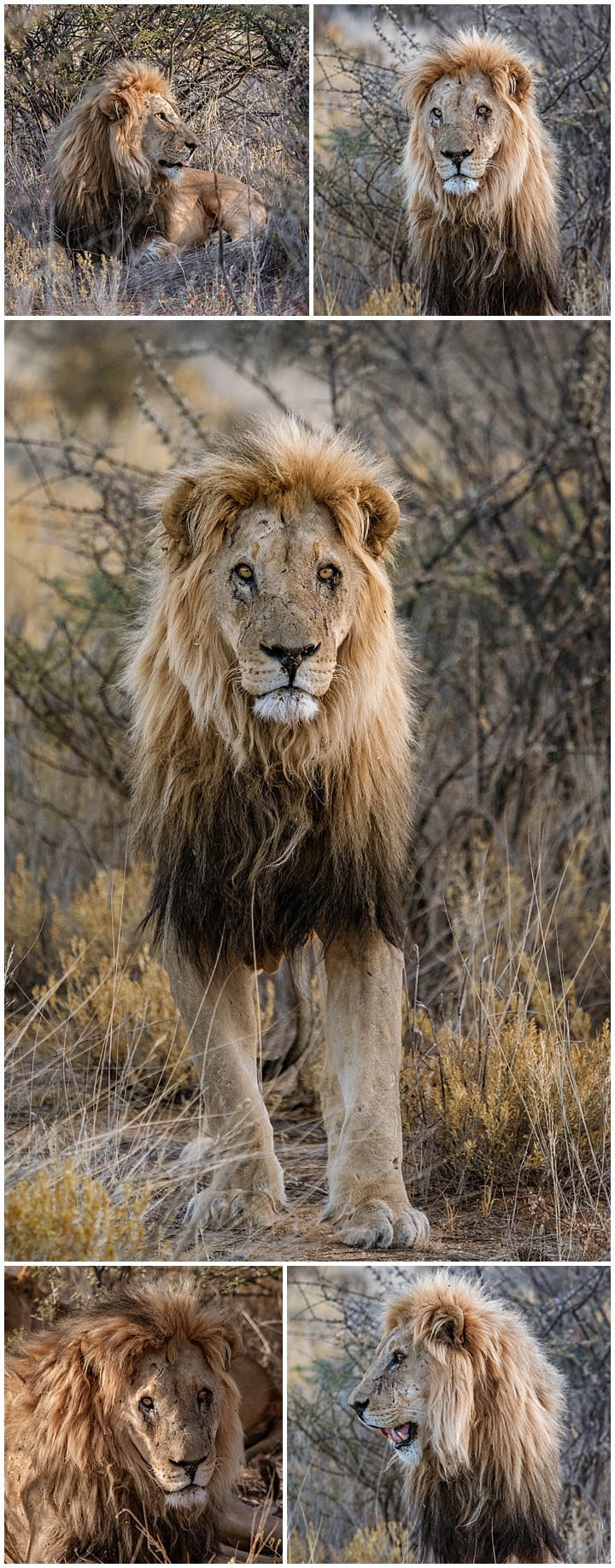
The male lions are the King of the Jungle in song and myth, but are actually rather lazy. It was rare to see them do anything but sleep, or walk slowly behind a female lion. One male lion had a severe limp, apparently from a prior fight.
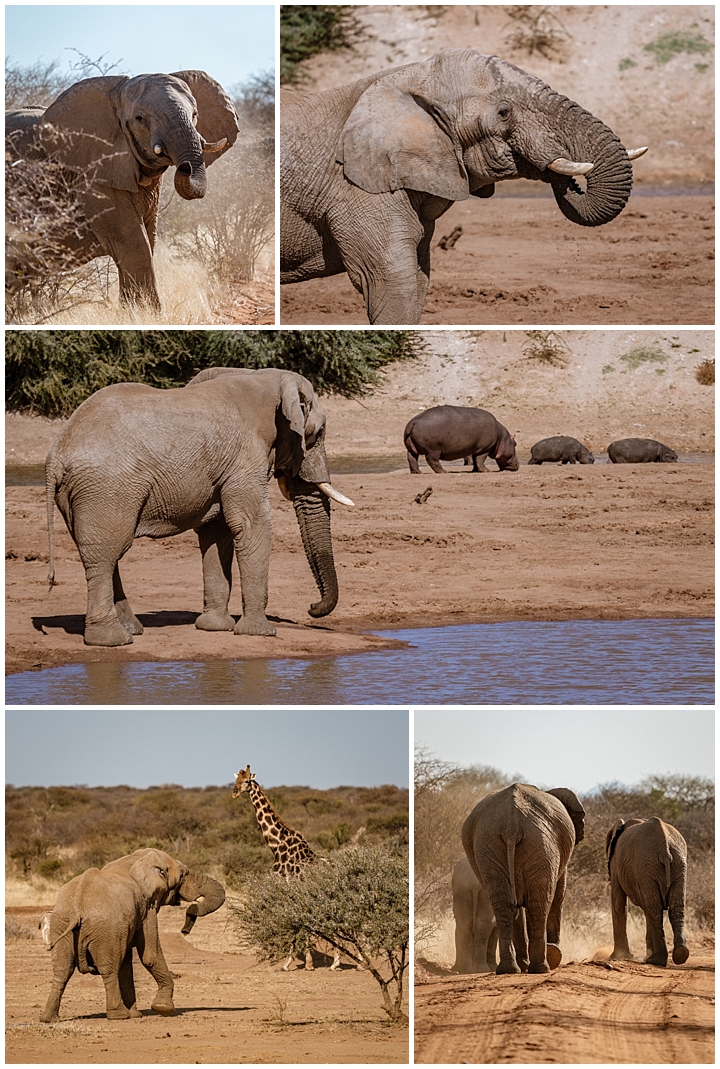
Elephants have been hunted throughout Africa for their ivory tusks, almost driving them to extinction. Private reserves such as Erindi are leading the efforts to repopulate this majestic animal (another of the The Big Five) throughout Africa. Though these mammoth animals destroy trees and grassland they trample through, that action is actually critical to maintaining the existing ecological balance. We had a chance to see several dozen elephants during these two days.
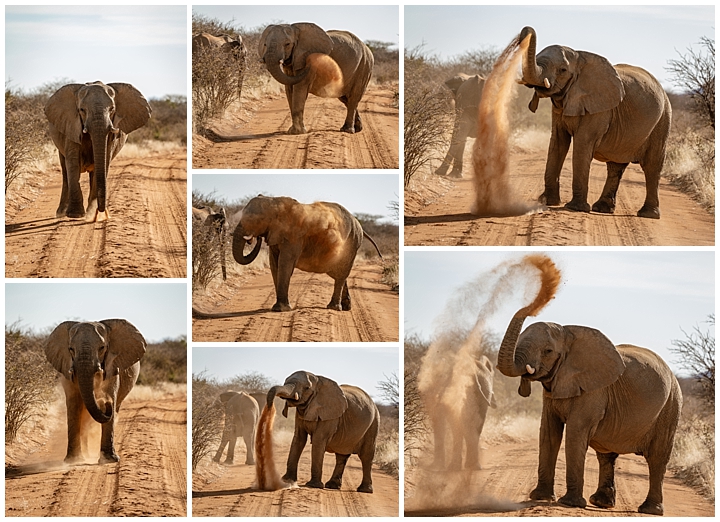
One interesting behavior of elephants that we have seen before, is their throwing of dirt upon themselves. A small family of elephants came onto the road just a few yards in front of our jeeps, and one of them proceeded to give a full demonstration of the process (full block above). Elephants apparently do this for a number of reasons, including using the dirt as a sunscreen and to keep off parasites.
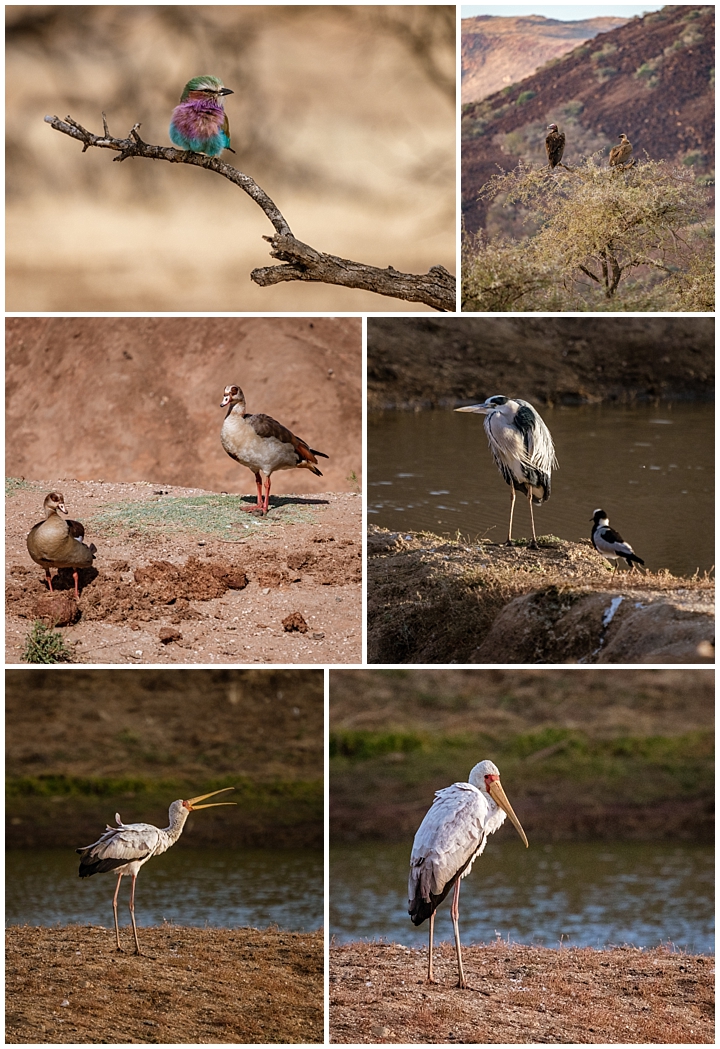
There are over 300 species of birds known to inhabit the Erindi reserve. Though we are not “birders” and are not able to identify more than the most common species, it was obvious that there was an abundance of them wherever we looked.
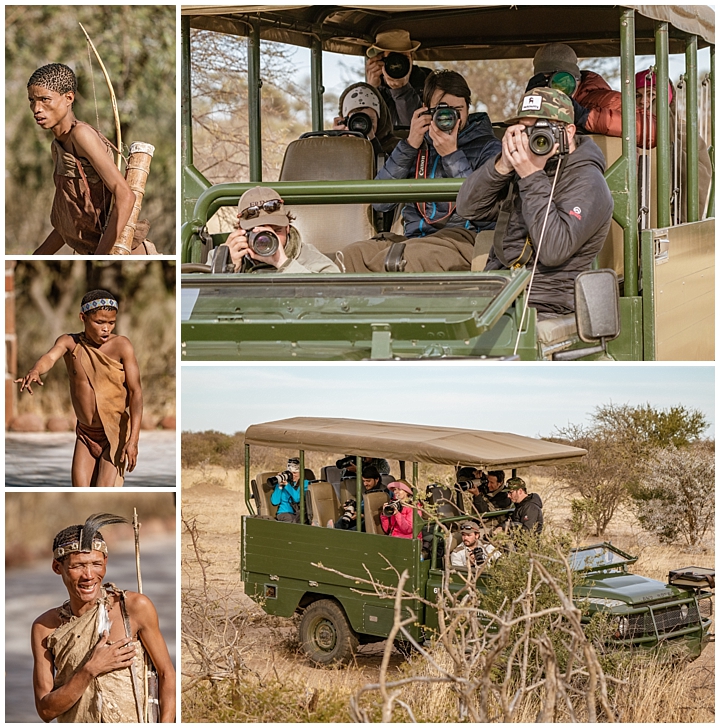
And, of course, there were the humans of the area. One advantage of doing a safari on a private reserve vs public national park, is that the number of people is severely restricted here. We had a small band of local bushmen do a small dance for us each morning, wishing us a successful hunt (left column). Once we left the lodge area though, it was rare to find any people not belonging to our group on the roads.
The jeep shown above (right column) was the second half of our safari tour group organized by Squiver. At one point, our two jeeps were near each other, watching a lion sitting down. I took a photo of the other group, then commented that there didn’t appear to be any photographers in the group (we had been in that spot for 20 minutes and the lion was only showing how well he slept…). Within seconds of my making that comment, all cameras from that group pointed my way, yielding the image upper-right. ☺
There were a lot of elephants in this area. At one point, this family came out onto the road just a few yards behind us. The baby started playing with the older sibling, then the adults started spraying dirt on themselves.
